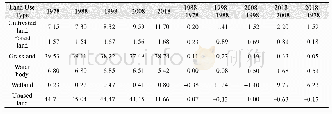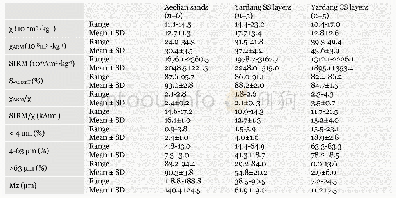《Table 1 The number of sand particles and area ratio at different weight of sand.》
 提示:宽带有限、当前游客访问压缩模式
提示:宽带有限、当前游客访问压缩模式
本系列图表出处文件名:随高清版一同展现
《Sliding friction of shale rock on dry quartz sand particles》
The surface roughness of the cleaned shale rock measured by the surface profilometer was 11.47±2.28μm(eight measurements).The Young’s modulus(E1)before sliding of the shale rock determined using a depth sensing indentation technology known as nanoindentation[22]was 35 GPa,and the Poisson’s ratio(μ1)was 0.25.Figure 5(Image J)shows the diameter distribution of the sand particles.According to Fig.5,the average particle size was about 800μm.The Young’s modulus(E2)according to the techniques and the analysis methodologies in Ref.[23]using a grain radius of 400μm was 72.6 GPa,and the Poisson’s ratio(μ2)was 0.2.Five hundred random grains of sand particles were weighed(value of 0.2205 g),and the average weight of each one hundred grains of sand particles was obtained by dividing that value by 5(0.0441 g).To determine the amount of quartz sand particles in the experiment more accurately,each time1 g of sand was gradually placed on the lower shale rock,the particles were arranged tightly without stacking between particles until 3.8 g of sand took up the entire lower shale rock.The process of the experimental operation is shown in Fig.6.The weight of the sand in Fig.6(a),6(b),6(c),and 6(d)is 1,2,3,and3.8 g,respectively.To broaden the applications of this study,a dimensionless area ratio was defined as the value determined bywhere n is the number of particles on the lower shale rock,S is the upper surface area of the lower shale rock,and with the assumption that all different sizes of sand particles are equal spheres with a radius r of 400μm.Table 1 shows the number of sand particles and the area ratio when0.06,0.24,0.475,0.95,1.9,and 3.8 g of sand were used in this work.
| 图表编号 | XD0058611800 严禁用于非法目的 |
|---|---|
| 绘制时间 | 2019.08.01 |
| 作者 | Huijie ZHANG、Shuhai LIU、Huaping XIAO |
| 绘制单位 | College of Mechanical and Transportation Engineering,China University of Petroleum-Beijing、College of Mechanical and Transportation Engineering,China University of Petroleum-Beijing、State Key Laboratory of Oil and Gas Resources and Engineering,China Unive |
| 更多格式 | 高清、无水印(增值服务) |
查看“Table 1 The number of sand particles and area ratio at different weight of sand.”的人还看了
-

- 表3 全球冰川面积分级统计Table 3Statistics of number and area of glaciers in different area ranks all around the w orld
-

- 表4 一级冰川区内不同面积等级冰川的数量与面积Table 4 Number and area of glaciers in different area ranks of the 19 first-order glacier regions
-

- Table 5 Area ratios and change rates of different land use types in Yarkant River basin(1978–2018)(%)
-

- Table 1 Details of number, mean length, mean area and Horton’s ratios for streams of various orders for the Navrood wate





